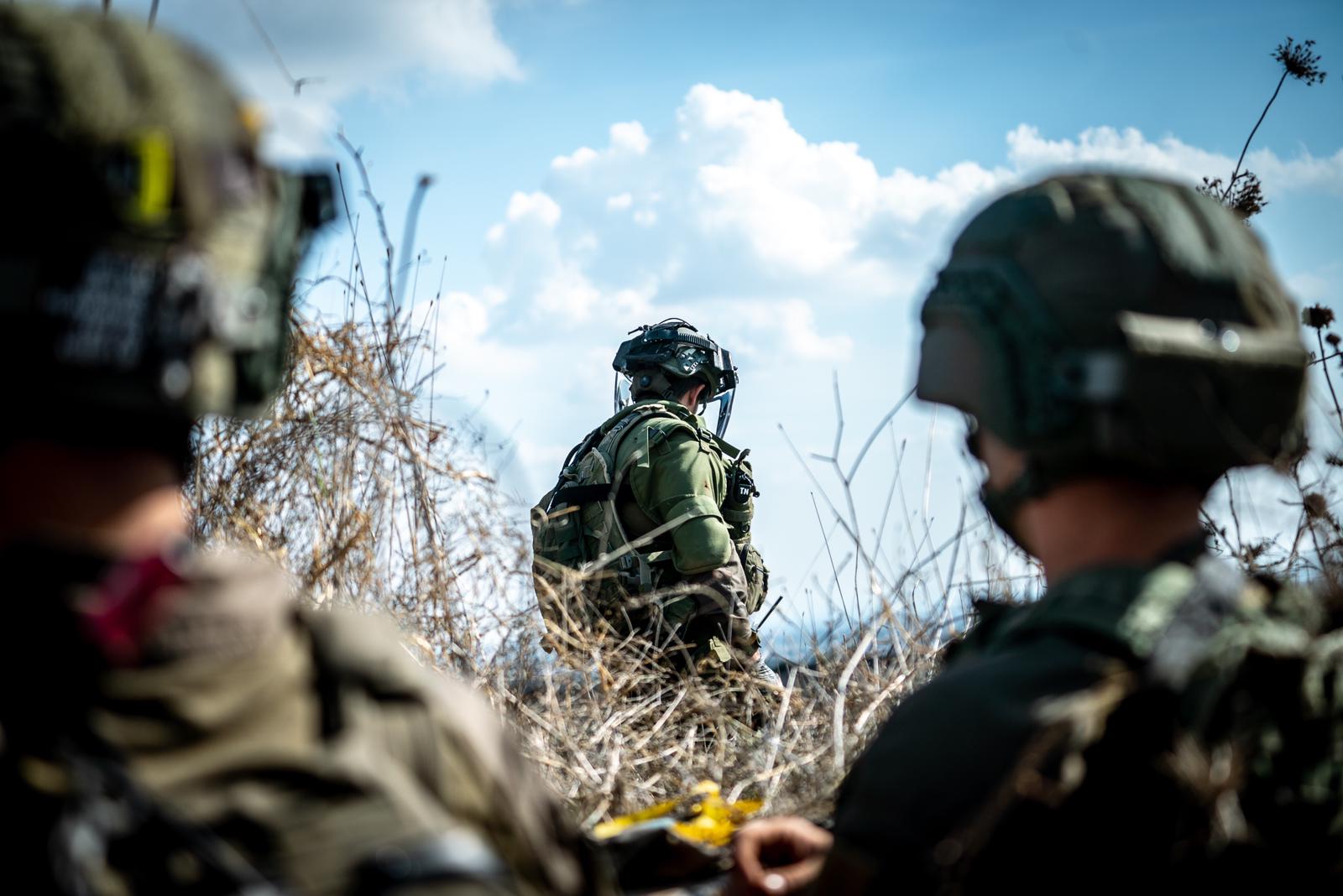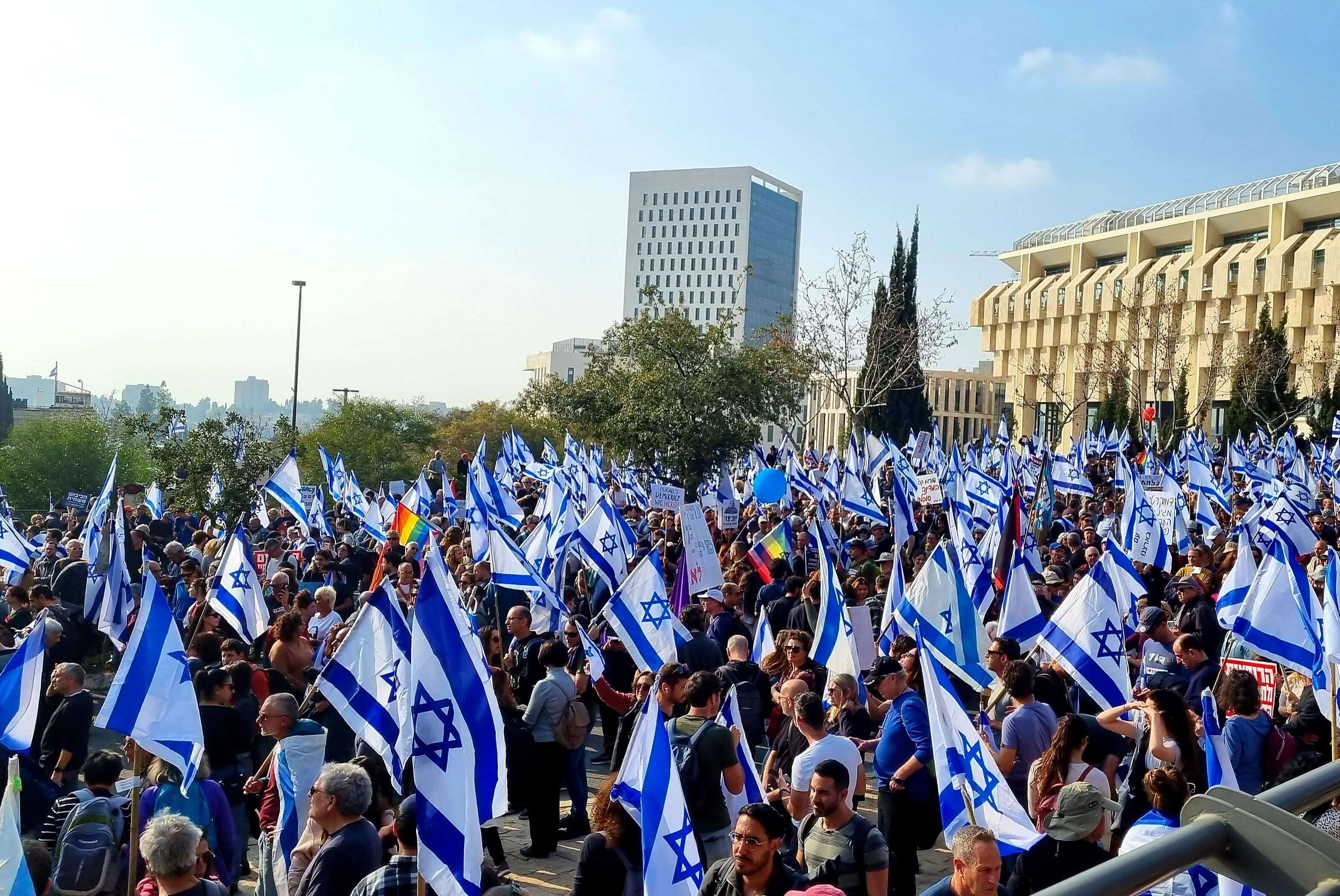Tabish v. Attorney General and the Legal Framework Governing Physical Coercion in ISA Interrogations
 Recent legal developments have again brought the interrogation practices of the Israeli Security Agency (ISA) to the fore. As new details emerged about the first-ever criminal investigation against ISA interrogators over gross misconduct during an interrogation, the ISA’s interrogation practices survived another legal challenge at the Israeli Supreme Court.
Recent legal developments have again brought the interrogation practices of the Israeli Security Agency (ISA) to the fore. As new details emerged about the first-ever criminal investigation against ISA interrogators over gross misconduct during an interrogation, the ISA’s interrogation practices survived another legal challenge at the Israeli Supreme Court.
Published by The Lawfare Institute
in Cooperation With

 Recent legal developments have again brought the interrogation practices of the Israeli Security Agency (ISA) to the fore. As new details emerged about the first-ever criminal investigation against ISA interrogators over gross misconduct during an interrogation, the ISA’s interrogation practices survived another legal challenge at the Israeli Supreme Court. The latest Supreme Court decision, Tabish v. Attorney General, further dilutes the legal framework famously established by the Supreme Court in its 1999 decision in Public Committee Against Torture v. Israel—and highlights the shortcomings of that decision.
Recent legal developments have again brought the interrogation practices of the Israeli Security Agency (ISA) to the fore. As new details emerged about the first-ever criminal investigation against ISA interrogators over gross misconduct during an interrogation, the ISA’s interrogation practices survived another legal challenge at the Israeli Supreme Court. The latest Supreme Court decision, Tabish v. Attorney General, further dilutes the legal framework famously established by the Supreme Court in its 1999 decision in Public Committee Against Torture v. Israel—and highlights the shortcomings of that decision.
The significance of Tabish stems in part from the fact that the case was not limited to the ISA’s conduct toward Tabish. The petitioners also challenged the validity of the internal guidelines put in place by the ISA to regulate the application of so-called “special interrogation methods.” The Supreme Court dismissed the challenge on both counts. Notably, the decision came after the court ordered the government, for the first time, to submit the internal ISA guidelines with respect to the resort to “special interrogation methods” for the court’s review.
The Case
On Nov. 26, the Supreme Court of Israel (in its capacity as the High Court of Justice) dismissed yet another attempt to challenge the ISA’s resort to so-called “special interrogation methods” or “pressure techniques” in interrogations of terrorist suspects. These terms refer to interrogation methods that entail physical and psychological coercion. Petitioners Fares Tabish and the NGO Public Committee Against Torture alleged that Tabish was tortured while in ISA custody in 2012. Tabish was suspected of involvement in Hamas plots to carry out attacks and kidnappings and was accused of storing and concealing weapons for these purposes. The government denied that Tabish was tortured, but did not contest that special interrogation methods were applied in his case. The petitioners brought the case after the attorney general declined to order a full criminal investigation into Tabish’s allegations, seeking the reversal of the attorney general’s decision with respect to Tabish’s complaint.
In addition, the petitioners argued that the internal ISA guidelines that govern the application of special interrogation methods are unlawful and should be invalidated. Their argument rested on the legal framework outlined by the Supreme Court in its famous 1999 decision Public Committee Against Torture v. Israel (PCATI). (I explored this framework at length in a previous Lawfare post, as did Yuval Shany.) In a nutshell, the Supreme Court held that torture in ISA interrogations is prohibited. However, the court left the door open for the application of a set of interrogation methods it described as “pressure techniques.” Resort to such methods, the court held, could be excused if these techniques were required in order to prevent an imminent, concrete and serious danger to human lives. The necessity defense under Israeli criminal law would be available to interrogators who apply “pressure techniques” in such exigent circumstances, shielding them from criminal liability. The court made it clear, however, that the necessity doctrine cannot serve as a basis for ex ante authorization of physical interrogation methods. Only primary legislation could provide such authorization.
At the same time, the PCATI Court noted that the attorney general “can establish guidelines regarding circumstances in which investigators shall not stand trial, if they claim to have acted from ‘necessity.’” The attorney general issued such guidelines in 1999, which in turn encouraged the ISA to put in place its own guidelines with respect to the process of consultation and authorization prior to resorting to “special methods” out of necessity. It is those internal guidelines that the government shared with the court ex parte—for the first time—in the framework of the proceedings in Tabish.
The Tabish petitioners argued that the ISA’s internal guidelines and consultation procedure flout PCATI because they essentially authorize the resort to “special interrogation methods” in advance, contrary to the Supreme Court’s express prohibition against ex ante authorization based on the necessity defense. PCATI, they maintained, envisioned spontaneous decisions by individual interrogators triggered by unexpected, urgent circumstances that render physical coercion immediately necessary. Such circumstances, they asserted, do not lend themselves to a bureaucratic consultation and authorization process. Consequently, the petitioners argued that these internal ISA guidelines, as well as the portion of the attorney general’s 1999 guidelines that sanctioned those guidelines, should be annulled.
The government, on its part, argued that the internal ISA guidelines only address the procedure to be followed if and when the need for special interrogation methods arises, in keeping with the 1999 attorney general guidelines. The government denied that the internal ISA guidelines authorize the resort to “special interrogation methods” in advance. In a somewhat puzzling argument, the government noted that even when a superior officer is asked about potential application of such methods in a given case, that official cannot affirmatively authorize the use of violence based on the necessity defense in the particular circumstances in question, but can express an opinion on the matter. The government further noted that superior officials have the power to constrain the application of special methods by subordinates and to safeguard against abuse.
Therefore, the government argued, both the internal ISA guidelines and the attorney general’s guidelines are consistent with PCATI. It underscored that the precedent set by PCATI does not require that an interrogator decide whether and how to apply special methods alone without consulting with other officers. The government further argued that invalidating the guidelines would be unfair to the interrogators, who work on behalf of the government and should have at least some degree of legal certainty as to whether or not they might face criminal liability. It emphasized that the ISA has applied “special measures” or “pressure techniques” in only a small fraction of interrogations.
The Decision
The petitioners in Tabish faced an uphill battle in light of the Supreme Court’s recent decision in Abu Gosh v. Attorney General (analyzed in the previous Lawfare posts mentioned above, here and here). In that case, the Supreme Court dismissed a similar petition brought by a Palestinian man who alleged that he had been tortured while in ISA custody. As in Tabish’s case, the attorney general declined to order a criminal investigation into Abu Gosh’s allegations. The Supreme Court affirmed the attorney general’s conclusion that Abu Gosh’s interrogators met the requirements for the necessity defense to apply, precluding their criminal liability.
Importantly, in Abu Gosh the court acknowledged that the interrogators may have followed internal guidelines and consulted with their superiors before resorting to physical interrogation methods. It asserted, however, that the circumstances of the case merited the necessity defense, internal consultations notwithstanding. The court stopped short of explicitly holding that the existence of internal ISA guidelines and a consultation or authorization process was consistent with PCATI. But if that question remained open in Abu Gosh, it has now been answered in Tabish.
The court first addressed the attorney general’s decision with respect to Tabish’s individual case. Similar to Abu Gosh, the court held that based on the available evidence, it was reasonable for the attorney general’s to decide not to order a criminal investigation into Tabish’s complaint following an internal examination. The court declined to intervene in the attorney general’s conclusion that Tabish had not been tortured, nor in his conclusion that Tabish’s interrogators were entitled to the necessity defense with respect to “special methods” applied during his interrogation. The court also reiterated that the attorney general is under no obligation to order a full criminal investigation into each complaint alleging misconduct during ISA interrogations. As it did in previous decisions, the court reaffirmed the legitimacy of the internal complaint examination mechanism within the Justice Ministry as a tool the attorney general may rely upon for assessing the applicability of the necessity defense before ordering a criminal investigation.
Turning to the broader question of the validity of the internal ISA interrogation guidelines, the court explicitly held that the guidelines are lawful and consistent with PCATI. Without divulging the full content of the classified document, the court underscored that the guidelines only address the process for applying special interrogation methods in real time when the need arises. The guidelines encompass consultation with superiors; constraints on the exercise of discretion in particular cases; and documentation. According to the court, the guidelines do not outline the substantive conditions under which the application of such measures would be covered by the necessity defense. Therefore, they do not constitute ex ante authorization.
The court accepted the government’s interpretation that PCATI does not require that interrogators decide whether to apply “special methods” on their own initiative, without consulting with superior officers. It agreed that such consultations are desirable because they constrain the application of these methods and protect against abuse.
Further Dilution of the Public Committee Against Torture Framework?
The Supreme Court’s decision in Tabish has significant implications for both the scope of the criminal law necessity defense as applied to ISA interrogations, and the broader “special interrogation methods” legal architecture.
First, the court again advanced a capacious interpretation of the scope of the necessity defense that is at odds with PCATI’s relatively narrow construction of that defense in the ISA interrogations context. As Justice Yitzhak Amit noted in his brief concurrence, Tabish’s case “is not the classic case of a ‘ticking bomb’ that might explode in a matter of minutes” (my translation)—the paradigmatic case for the application of the necessity defense under PCATI. The link between Tabish’s knowledge and actions and impending deadly Hamas attacks seems to be even more attenuated than in Abu Gosh, in which information Abu Gosh had provided led to the discovery of an explosive device in the heart of Tel Aviv weeks later. The Tabish Court deemed sufficient to grant his interrogators the protection of the necessity defense the mere fact that Tabish stored around ten weapons intended to be used at some point in future attacks.
Based on the public record, therefore, Tabish further stretches the concept of an imminent, concrete danger to human lives as the threshold for the application of the necessity defense, and empowers the ISA to resort to “special interrogation methods” in a broad category of cases. However, it is worth noting that the court described the details of the Hamas attacks prevented by the “special methods” only vaguely, and appeared to rely heavily on the classified record. The full factual picture could cast the court’s application of the necessity defense in this case in a different light.
Furthermore, Justice Yosef Elron, who wrote the main opinion, favorably invoked in dicta the view of some theorists that the necessity defense is a justification that strips the criminality of an act—rather than an excuse that protects a would-be defendant from criminal liability even while acknowledging the criminality of the act itself. This view bestows an air of legitimacy on “special interrogation methods” applied out of necessity, rather than characterizing their application as a necessary evil. Adding to this, Justice David Mintz’s brief concurrence appears to suggest in passing that the necessity defense could excuse not only physical coercion short of torture, but also actual torture. It is not clear whether this is an expression of a considered legal position or simply a poor turn of phrase, but commentators have taken it very seriously (see also here, and here, Hebrew).
The pairing of what appears to be an increasingly broad and permissive interpretation of necessity with heavy emphasis on internal oversight has exacerbated concerns that abuses of these methods could go unaddressed. As Yuval Shany and Mordechai Kremnitzer previously pointed out, despite hundreds of complaints of physical abuse in ISA interrogations, only one criminal investigation has been opened to date. The case reportedly involved a brutal sexual assault of a Palestinian woman as part of a search and interrogation directed by ISA officers.
Second, in addition to stretching the concept of necessity, the court imposed a substantial burden on Tabish to prove his claim that he had been tortured. The Court highlighted inconsistencies in Tabish’s account of the events over time. It found that Tabish’s refusal to take a polygraph test undermined his credibility and minimized the weight of documented physical complaints that could suggest excessive violence, as well as expert medical opinions submitted by the petitioners. The court therefore placed a practically insurmountable evidentiary burden on the plaintiff, further immunizing the ISA from accusations of wrongdoing.
Third, Tabish is in tension with the spirit of the PCATI framework. While strictly process-oriented guidelines that govern the application of “special interrogation methods” when the need arises in individual cases may technically be reconciled with PCATI, the existence of a bureaucratic process for authorizing physical violence in interrogations in many ways undermines the essence of that precedent, which went against the institutionalization of physical coercion in ISA interrogations.
To a certain extent, the affirmation of the ISA internal guidelines is a product of the analytical flaws of the PCATI framework itself. PCATI precluded prior authorization of physical interrogation methods, while at the same time recognizing that such methods might be necessary and permissible in some cases and inviting the attorney general to issue guidelines to that effect. Since this framework was the point of departure, it would have been difficult for the court in Tabish to conclude that the ISA may not put in place an internal process for addressing necessity cases when they arise. It simply does not make any sense to rule that interrogating officers should not consult their superiors when contemplating whether or not to use physical methods and that they should act on their own initiative. An approach like this only loosens the constraints on the resort to those methods and increases the risk of abuse. Moreover, the ISA is, after all, a bureaucracy, and bureaucracies need standard operating procedures and chains-of-command to function. Finally, there is something to the government’s argument that interrogating officers should have at least some clarity as to their legal situation when they apply what the government views as measures necessary to prevent an imminent danger to human lives.
Reconsidering the PCATI Framework?
Tabish illustrates, as I have noted before, that the necessity back door that former Chief Justice Aharon Barak left open in PCATI serves as a basis for de-facto authorization of the resort to physical interrogation methods under certain conditions. The Supreme Court has gradually stretched the concept of necessity, and the ISA could interpret these judicial decisions as permission to apply physical methods in the circumstances that the decisions address. What’s more, the court has now explicitly sanctioned the institutionalization of “special interrogation methods” in affirming the ISA’s internal guidelines. It is perhaps time to recognize that the PCATI framework was rendered impracticable when translated and applied to the day-to-day operations of a complex government bureaucracy. Over time, that framework has served as the basis for the normalization of the resort to physical methods in ISA interrogations, with the blessing of the Supreme Court.
If one accepts the highly controversial position that physical interrogation methods short of torture might be excused in certain cases, the question arises whether the PCATI framework as it currently stands is analytically better than the scheme that preceded it, which the Court annulled in that case. Prior to PCATI, the ISA used a permit system that outlined the circumstances in which physical interrogation methods would be excused based on necessity and provided for oversight of their application. (This is not to say that PCATI did nothing to constrain the resort to physical violence in ISA interrogations in practice. As Justice Amit notes, there has been a significant reduction in the application of these measures since 1999.)
PCATI’s principled stance that physical violence short of torture is banned and could only be excused ex post facto in rare cases on a case-by-case basis is morally appealing, and it is possible that it has deterred ISA officers from resorting to physical interrogation methods. However, given that the PCATI scheme as it stands today de facto legitimizes and authorizes “special interrogation measures,” there is an argument for abandoning the rhetorical maneuvering and instead focusing on charting a restrictive, clear set of rules and oversight mechanisms that would enshrine the general prohibition against physical interrogation methods while outlining the rare conditions in which they may still be applied.





